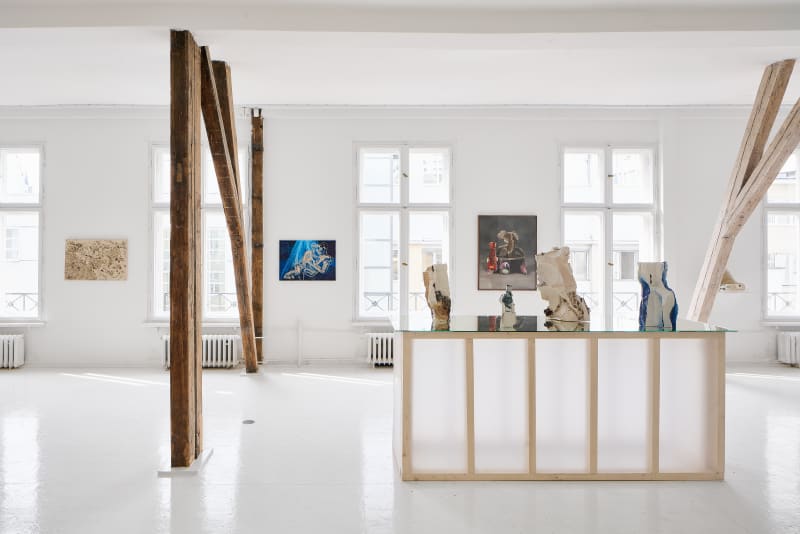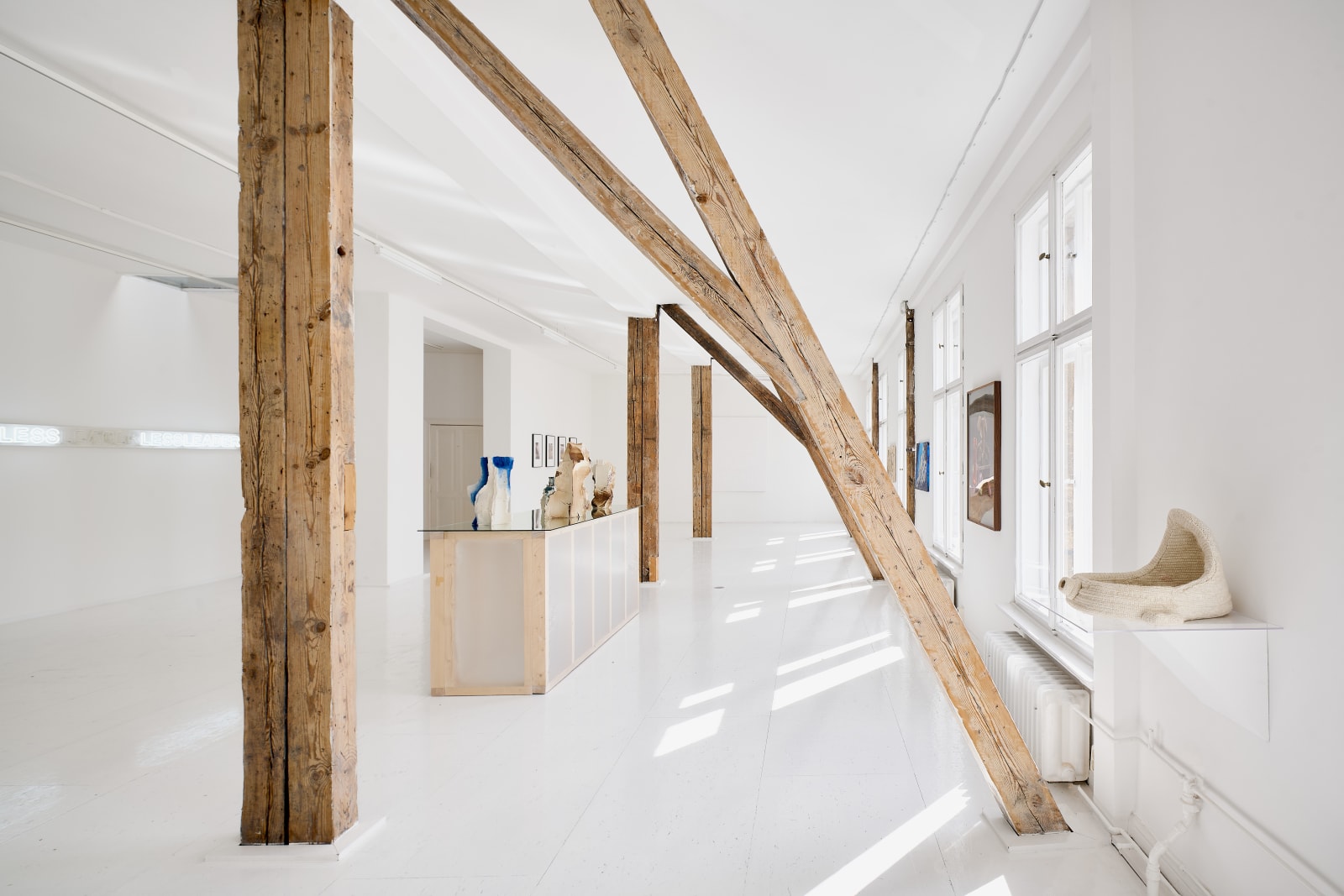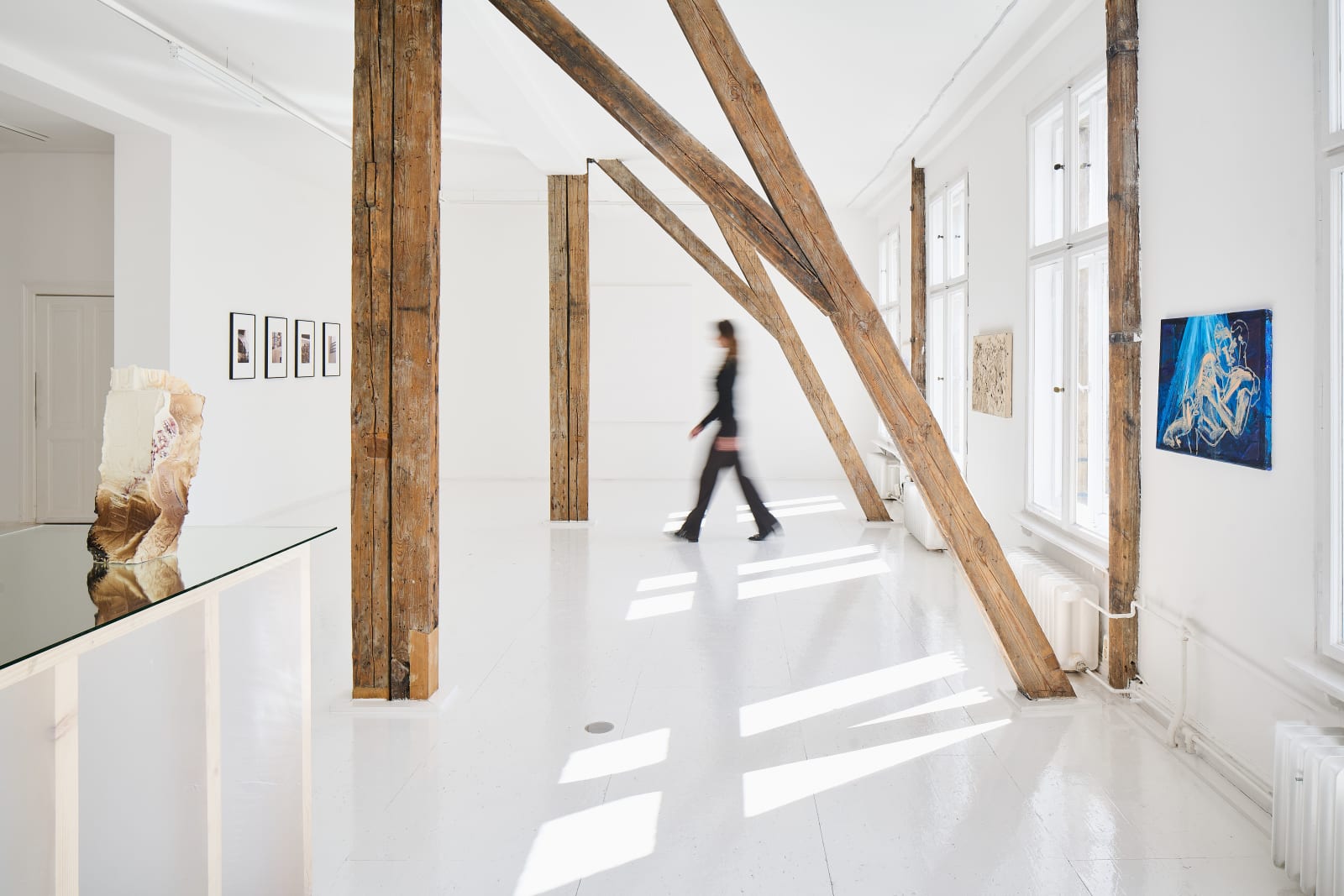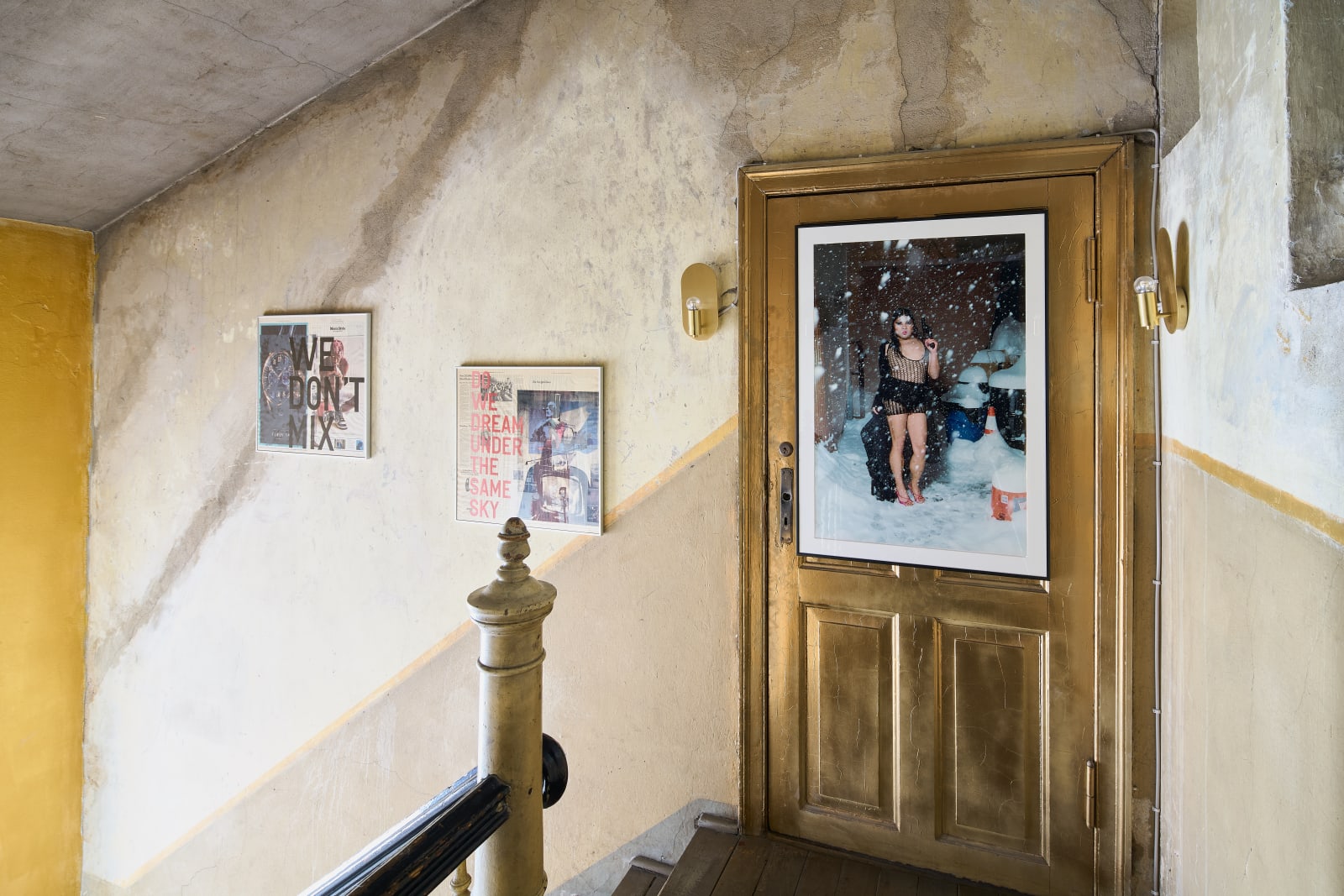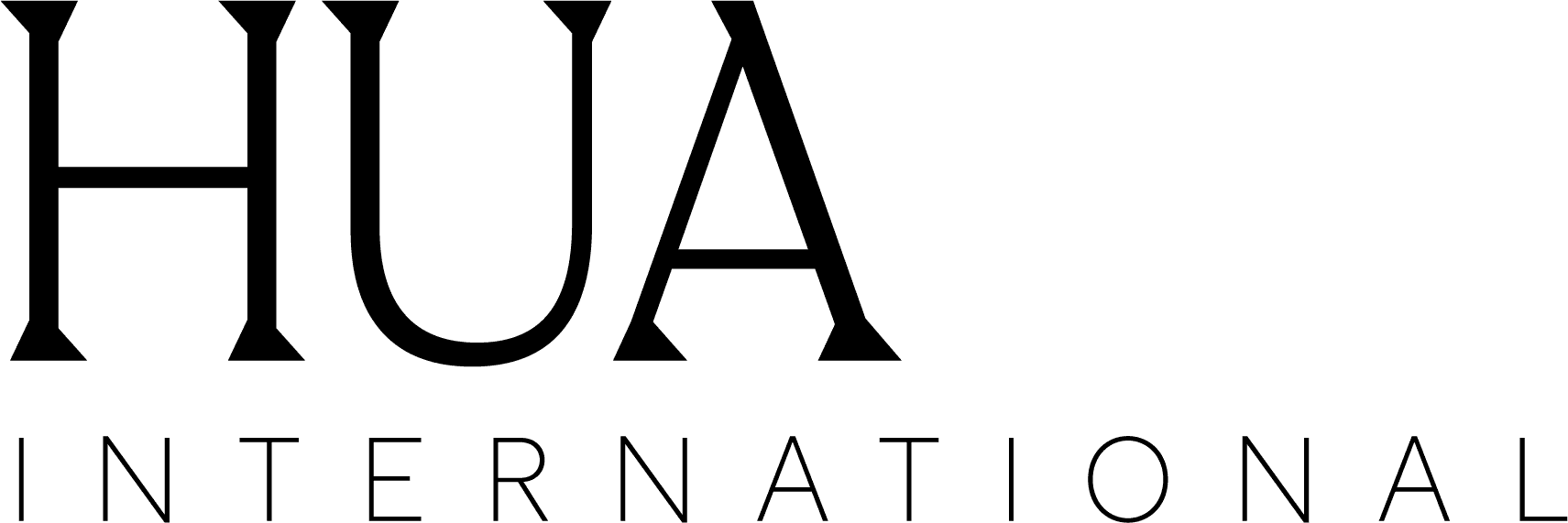Dizzying Effect: Green Go Home, CFGNY, Tirdad Hashemi and Soufia Erfanian, Yinping Hu, Cole Lu, Sung Tieu, Stewart Uoo, Isaac Chong Wai
Hua International is pleased to present Dizzying Effect during the 2024 Berlin Art Week. Taking cues from CFGNY’s recent ceramic works, this group exhibition brings together voices to explore tactile, communal moments that reference the world in introspective, critical manners. The title, “Dizzying Effect,” is drawn from cultural critic Rey Chow’s work, offering a lens to view these moments as diverse but never static. Featured artists include Green Go Home, CFGNY, Tirdad Hashemi and Soufia Erfanian, Yinping Hu, Cole Lu, Sung Tieu, Stewart Uoo, Isaac Chong Wai.
At first glance, the ceramic objects on display appear distinct from CFGNY’s syncretic garments. Yet, much like the garments, these porcelains reveal myriad details rooted in touch. While they may resemble quarry-hewn stones from a distance, these objects seated on mirrored pedestals are far more inviting: their subtly colored, architectonic façades bespeak the servitude and enchantment of man-made objects, like how certain garments on mannequins can inspire a soulful connection. Upon closer inspection, the façades indicate that the clay, before being molded and fired, bears the imprint of various objects—dollar store bric-à-brac, vases, clothing items, some made in China and distributed globally along with the flow of capital. In an age when industrially produced objects frequently surface in art, CFGNY’s porcelains highlight the relational nature of art, other objects, and their creators. The New York–based artist collective uses negative space to document the marks left by entities that passed briefly into one another’s space.
The tactile, relational dimension is also evident in CFGNY’s collaborative research practice, and beyond. Drawing on cultural critics like Rey Chow and Sianne Ngai, CFGNY blends poststructuralist anti-essentialism with postmodern aesthetic theory, creating more than just artistic counterparts to theoretical writing. It collects insights to provoke nuanced, offbeat responses to surroundings, embodying a spirit that, as Stuart Hall puts it, says “‘yes’ and ‘no’ at one and the same time.” “Yes” to re-presenting contemporary Asian and Asian American signifiers, “no” to perceiving them as fixed or “authentically” Asian. “Yes” to engaging with distribution circuits, “no” to committing themselves to fashion as a business. “Yes” to working collaboratively, “no” to becoming a singular, reified voice. This push-and-pull, which is also seen in other art practices, critically emphasizes plurality and heterogeneity.
At Dizzying Effect, Cole Lu’s pyrographic works bring home the sense of touch felt in other parts of the exhibition, using charred strokes to outline a mythic universe—one where characters made of hatched lines crisscross on and off the substrate. In a gesture comparable to CFGNY’s work with Vietnamese tailors, Hu Yinping involved her mother’s weaving community in knitting sculptures; the resulting woolen objects evoke works by Damien Hirst and Marcel Duchamp, implicating the established artists unwittingly to expand the scope and definition of collaboration. Green Go Home (Tomas Vu and Rirkrit Tiravanija) conceives dialogues with civil disobedience, bringing together found images of revolutionaries and icons and agitprop-style, evocative texts; the grid then interacts with its display context to urge varied interpretations, including misunderstandings. Nearby, Stewart Uoo casts DeSe Escobar in a photo shoot, capturing in a wintry driveway a battle of gazes both between friends and between the image and audience. In Berlin, Tirdad Hashemi embarked on a collaborative journey with Soufia Erfanian to sketch in each other’s presence, eventually giving drawings that explore the collective nature of any intimacy. Isaac Chong Wai works with performers to probe the politics of public remembrance; his neon work and conceptual painting focus on the relationship between us and leadership, echoing his tableaux that memorialize the ebb and flow of identity. Somewhat shifting from her analytical eye searching for evidence of control, Sung Tieu studies perforated metal plates painted with nail designs at a housing complex; their permeability and designed surfaces hint at the exchanges between Tieu and the Vietnamese nail artists in Germany. Instead of calling for an imagined community, the convergence of artists in Dizzying Effect heightens an easily overlooked attribute of heterogeneity, namely its mutability. This heterogeneity warrants an array of contexts, techniques, and paradigms, but it also has them stay in flux, encouraging the positions to leave subtle marks in each other’s space while allowing wandering to happen and differences to arise. (Text by Jacob Zhicheng Zhang)
